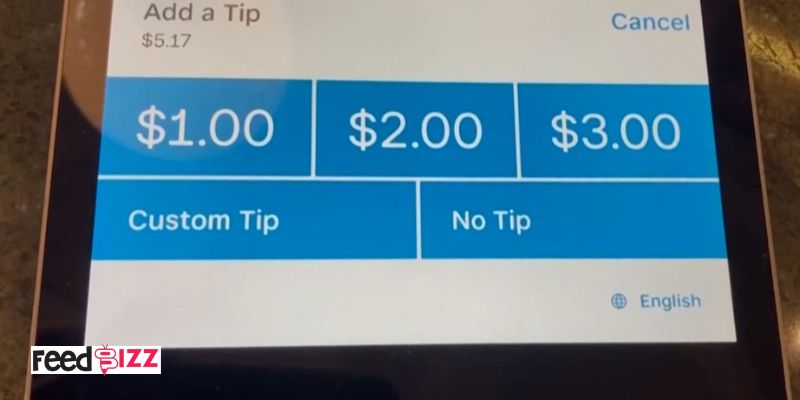Digital transactions have revolutionized how we interact with businesses, and tip screens are now a standard feature across various platforms. These screens serve as a convenient interface for customers to express their appreciation for services, from dining experiences to ride-sharing. Tip screens simplify the tipping process and play a crucial role in enhancing customer satisfaction and loyalty.
Understanding the types of tip screens—such as images, memes, and those found in games like Honkai Impact—can provide valuable insights into their impact. These screens are designed to engage users, making the tipping process more intuitive and sometimes even entertaining. By exploring the diverse applications of tip screens, businesses can optimize their use for better customer interactions.
This article delves into tip screens, exploring their various forms, uses, and benefits. Whether you’re a business owner looking to implement tip screens or a user curious about how they work, this comprehensive guide will cover everything you need to know.
What is a Tip Screen?
Tip screens are digital interfaces that prompt users to leave a tip after a service transaction. They are familiar to users using social platforms, ride-hailing services, restaurants, and cafes. When giving tips, tip screens offer customers simple ways to choose the tip amount, making their work easier. The tip screen is part of modern guest interaction and allows for easy tip implementation.
The functionality of tip screens varies depending on the platform. There is a class of screens that pop up at the end of some activity and another class where screens can be articulated as part of a service application. It is, therefore, essential to make it as simple as possible for customers to tip. When the business eases the tipping process, the amount of gratuities is usually more significant, making the customers more satisfied.
Popular Uses of Tip Screens
Tip screens are unique and valuable and have thus been adopted by different industries. For example, tip screens are quite popular in restaurants and cafes in the hospitality industry. Customers then get a screen displaying tip amounts to be paid after they have been served a meal. This promotes tipping and ensures that the customers pay the service providers their wages fairly.
In the ride-sharing industry, tip screens are integrated into mobile apps. After completing a ride, passengers are prompted to leave a tip for their driver. This digital interface makes tipping quick and easy, promoting a culture of appreciation. Additionally, tip screens are now used in delivery services, personal care apps, and retail environments.
How to Optimize Tip Screens for Better User Experience
Optimizing tip screens is crucial to ensuring they serve their intended purpose effectively. One key aspect of optimization is the placement of the tip screen. Ideally, it should appear immediately after a transaction but before the customer closes the app or leaves the venue. This timing helps capture the customer’s positive feelings toward the service received.
Design is another important factor. Tip screens should be simple, clean, and easy to navigate. They should provide clear options for tipping amounts, such as preset percentages or custom amounts. Using visually appealing elements, such as graphics or animations, can also enhance the user experience, making the screen more engaging and encouraging users to leave a tip.
The Role of Tip Screens in Customer Service
Tip screens play a significant role in customer service by providing an easy way for customers to show appreciation for good service. They create an additional touchpoint where businesses can interact with customers, reinforcing positive experiences. Companies can foster a culture of gratitude and appreciation by integrating tip screens into their service model.
For employees, tip screens can increase earnings, boosting morale and job satisfaction. When staff feel appreciated, they are more likely to deliver high-quality service. Moreover, tip screens can provide valuable feedback for businesses, as the frequency and amount of tips can indicate customer satisfaction levels.

Tip Screen Images: Enhancing Visual Appeal
Images play a crucial role in making tip screens more appealing and effective. A well-designed tip screen image can catch the user’s attention and make the tipping process more personal. For example, using images of happy customers or satisfied employees can create a positive emotional connection, encouraging customers to leave a tip.
Visuals should be relevant and aligned with the brand’s identity. Humorous or relatable images can make the tip screen more engaging. The key is to ensure that the images do not overwhelm the screen or detract from the tipping options. A balanced, visually appealing design can significantly enhance the effectiveness of a tip screen.
Tip Screen Memes: Adding Humor to Interactions
Thus, it has become more common to see tips made in pictures and humorous images on the tip screens. Memes are not just amusing photos, videos, or comments; they can also lighten the conversation. Another idea is to put jokes or references to memes popular on the internet or refer to a particular context in the tips section to encourage customers to add a tip.
Memes are good as they will go down well with the receiver and are not limited to only the business circle. They also help keep the communication exciting and not just a business-as-usual kind of talk. A meme on the tip screen draws a customer’s attention, and if placed well, positive emotions are triggered, making the customer feel good about the tips given. However, there is always the risk of choosing wrong memes that may offend the customers. Therefore, proper memes should be selected.
Honkai Impact Loading Screen Tips
Honkai Impact is a popular mobile game known for its engaging loading screen tips. These tips are not only informative but also serve to entertain players while they wait. The game’s developers have cleverly used loading screen tips to provide gameplay advice, hints, and humorous comments that align with the game’s tone.
This approach keeps players engaged and enhances their overall experience with the game. Honkai Impact turns a potentially frustrating wait into an opportunity for engagement and learning by offering valuable tips during loading times. This case study highlights the potential of tip screens to go beyond mere functionality and become a part of the user experience.
Designing Effective Tipping Screens for Digital Payments
Tipping screens have become routine and are part of the digital payments frontier. Bolstering an efficient tip screen for a business that depends on tips, for example, food delivery services or a ride-hailing service provider, can make a massive difference in income. Implementing the tipping screen can be a problem, mainly because a well-designed tipping screen should allow the customers to choose between two poles—the tip by percentage and a custom tip, and the choice between traditional small percentage tips and non-traditional large tip amounts.
This should be clearly explained using large buttons and clear text, not complicating the tipping task. Further, to make it compulsory, the tip screen can be paired with other gadgets important to the business, such as offering point reward programs or slight discounts on purchases to those willing to use it. Tipping screens are good and can go a long way in encouraging more tips, given that they appeal to customers.
Future Trends in Tip Screens
Thus, technological developments and consumers’ shifting behaviours are expected to define the further evolution of tip screens. The tip screens will likely become more personalized since artificial intelligence (AI) and machine learning rapidly enhance digital platforms. This is especially useful when AI considers the user’s previous transactions and recommends tip amounts based on them.
Another new trend related to tipping is using cryptocurrencies and blockchain technology. This type of tip screen may one day allow for tipping in cryptocurrencies, enhancing users’ flexibility. Implementing features connected with sharing tips or thank-you notes is also possible, as this will also increase communication between customers and service providers.
Conclusion
Tip screens are essential in the digital age, simplifying the tipping process and enhancing customer interactions. From images and memes to specialized screens in games like Honkai Impact, tip screens come in various forms, each serving a unique purpose. Businesses can foster a culture of appreciation and drive customer satisfaction by optimizing these screens for better user experience and leveraging emerging trends.
As technology evolves, tip screens will become even more integrated into our daily lives, offering new ways to connect with customers and express gratitude. For businesses and service providers, understanding and effectively implementing tip screens can lead to better service, increased tips, and happier customers.
For More Articles Click the: Feedbizz.co.uk
FAQ’s
What is a tip screen?
A tip screen is a digital interface that prompts users to leave a tip after a service transaction. It simplifies tipping by providing preset options or allowing custom tip amounts.
How do tip screens work in ride-sharing apps?
In ride-sharing apps, tip screens appear after a ride is completed, prompting passengers to select a tip amount for the driver. This interface makes tipping quick and convenient.
Why are memes used on tip screens?
Tip screens use memes to add humor and make the interaction more enjoyable. They can engage customers, making them more likely to leave a tip.
Can tip screens be customized?
Businesses can customize tip screens to align with their brand and customer preferences. Customization options include design elements, tip amount suggestions, and the inclusion of images or memes.
What are future trends in tip screens?
Future trends include:
- Using AI to provide personalized tipping suggestions.
- Integrating digital currencies.
- Enhancing interactivity, such as social media sharing options.









